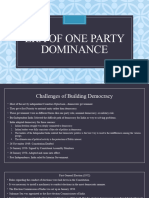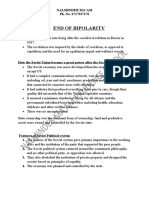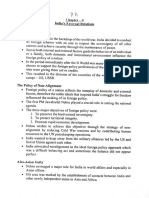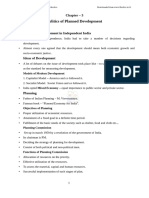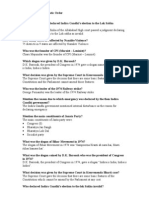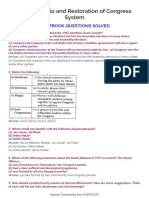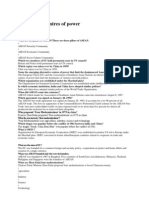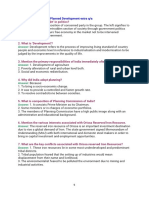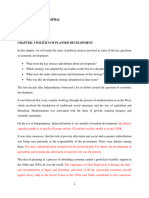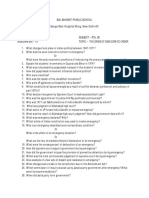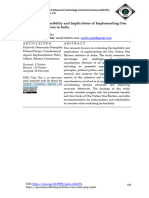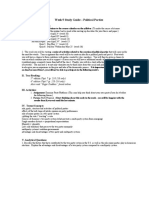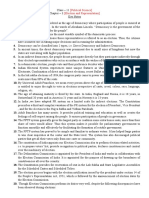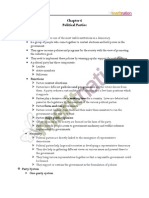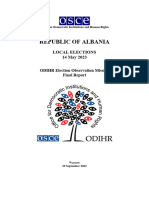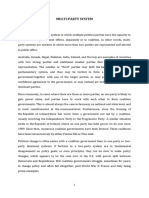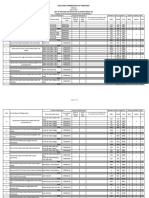100% found this document useful (1 vote)
1K views8 pagesIndia's Early Democratic Challenges
The document discusses the development of parties and the party system in India after independence. It makes three key points:
1. The Indian National Congress dominated the first three elections (1952, 1957, 1962) due to its role in the independence movement, widespread organization, and ability to accommodate diverse interests. This period is known as the "Congress system."
2. While Congress was dominant, opposition parties still played a role by offering criticism, keeping Congress in check, and ensuring the system remained democratic.
3. The 1960s brought challenges to one-party dominance as opposition parties united against Congress and challenges emerged from factions within Congress itself. This marked a decline in Congress' ability to accommodate all interests.
Uploaded by
Nidhi PrasadCopyright
© © All Rights Reserved
We take content rights seriously. If you suspect this is your content, claim it here.
Available Formats
Download as PDF, TXT or read online on Scribd
100% found this document useful (1 vote)
1K views8 pagesIndia's Early Democratic Challenges
The document discusses the development of parties and the party system in India after independence. It makes three key points:
1. The Indian National Congress dominated the first three elections (1952, 1957, 1962) due to its role in the independence movement, widespread organization, and ability to accommodate diverse interests. This period is known as the "Congress system."
2. While Congress was dominant, opposition parties still played a role by offering criticism, keeping Congress in check, and ensuring the system remained democratic.
3. The 1960s brought challenges to one-party dominance as opposition parties united against Congress and challenges emerged from factions within Congress itself. This marked a decline in Congress' ability to accommodate all interests.
Uploaded by
Nidhi PrasadCopyright
© © All Rights Reserved
We take content rights seriously. If you suspect this is your content, claim it here.
Available Formats
Download as PDF, TXT or read online on Scribd
/ 8


